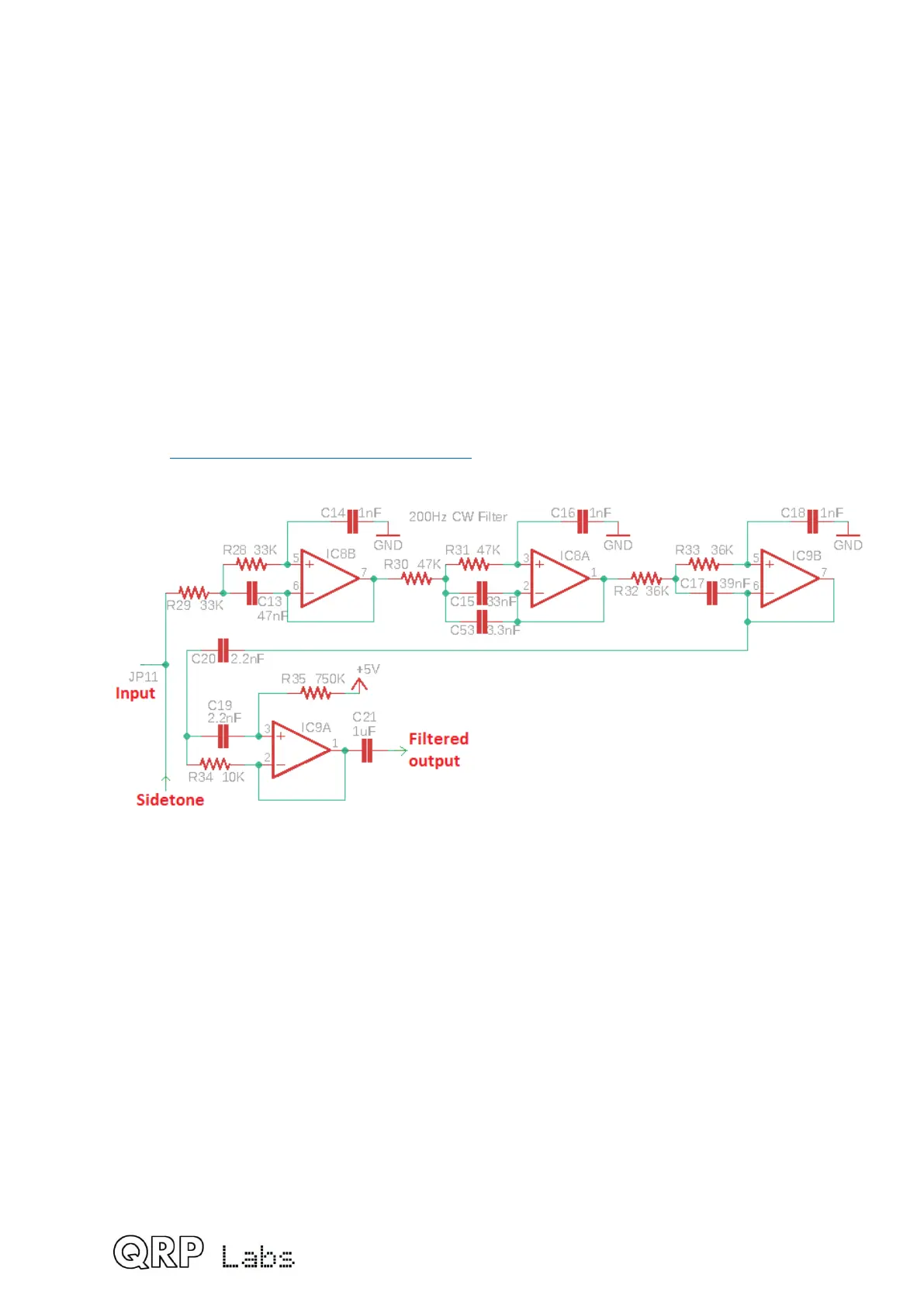the ‘scope probes etc. The lower (blue) trace is the 5V squarewave at the gate of the
BS170 transistors. The upper (red) trace is the voltage as the BS170 drain. It peaks at
approximately 40V in this example. This measurement was done with 12V supply and on
40m (7MHz).
The important point to note is that when the BS170 are switched ON (the gate voltage is
5V), the drain voltage is zero. When the BS170 is OFF the gate voltage pulses nicely to a
large amplitude. Class-E!
The summary: Class-E is actually quite easy to achieve in practice! Perhaps all the
complicated mathematics might help to squeeze out another % or two of efficiency. But for
practical purposes, it’s a wonderful building block to use in a single-band CW transceiver.
4.11 Low Pass Filter
The transmitter output is rich in harmonics
and must be followed by a good Low Pass
Filter, to attenuate the harmonics and satisfy
regulatory compliance.
The standard, well-proven QRP Labs Low
Pass Filter kit http://qrp-labs.com/lpfkit is
used here. To save space and cost, the
components are installed directly on the PCB,
not on a plug-in board.
It is a 7-element filter design originally by Ed W3NQN then published for many years on the
G-QRP Club web site’s technical pages.
4.12 Key-shaping circuit
A hard-keyed CW transmitter generates clicks many hundreds of Hz away from the
transmitted signal that can annoy users of adjacent frequencies. This is purely a
consequence of the mathematics of the Fourier transform and is unavoidable. Any time you
switch a signal instantly on or off, you WILL splatter energy onto unwanted nearby
frequencies.
To combat this, any good CW transmitter should include an RF envelope shaping circuit to
soften the key-down and key-up transitions. The ideal envelope shape is a raised cosine,
but this is difficult to implement without
significantly increasing the complexity of
the circuit.
The simple key-shaping circuit used
here uses only a few components but
produces good results.
This circuit was derived from one
published by Don Huff W6JL, see
https://www.qrz.com/db/W6JL/ though
as he says, “this integrator-type keying
circuit is found in many published
90
